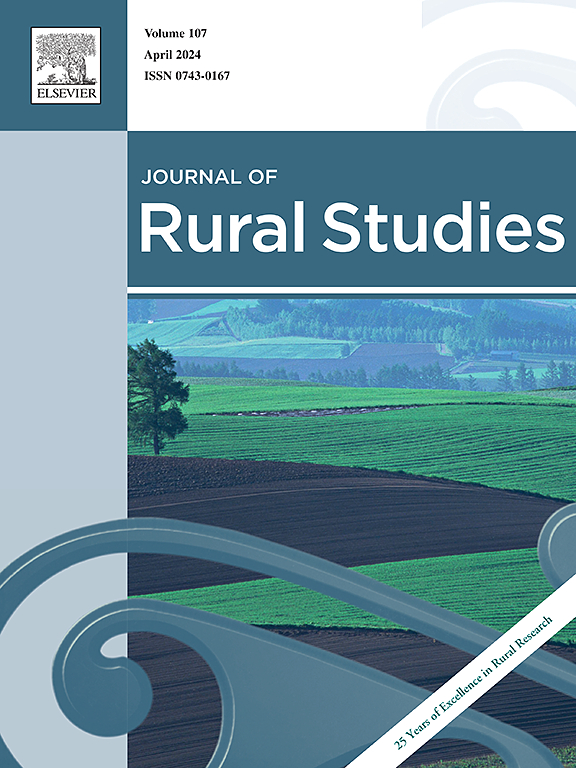Intermediate levels of socio-ecological disturbance drive higher biodiversity in naturally regenerating forests: A case study from Nepal
IF 5.1
1区 社会学
Q1 GEOGRAPHY
引用次数: 0
Abstract
Farmers in the middle hills of Nepal have been abandoning agricultural land over the last three decades due to complex socio-ecological drivers and dynamics. A consequence of this shift is the succession of forest. Naturally regenerating tree species, and farmers’ opinions of species benefits, were assessed with field measurements and interviews to guide an analysis of the socio-ecological factors that influence forest succession. Non-linear patterns of species abundance and diversity suggest that intermediate levels of disturbance lead to higher rates of biodiversity than either high or low management interventions within regenerating forest patches. Farmers that practice no or low levels of disturbance exhibit little investment or perceived benefits from their land beyond occasional fodder collection, while high forest disturbance is motivated primarily by activities within the succeeding forest that generate income. Intermediate disturbance patterns in succeeding forests mimic traditional farming practices in Nepal, utilising trees within the mosaic landscape for livelihood purposes. The local heterogenic agro-ecosystems are also associated with higher species diversity. Policy to support the maintenance or enhancement of forest succession on formerly cultivated cropland could contribute to higher species diversity and build adaptive capacity of rural households during landscape transitions.
在自然再生的森林中,中等程度的社会生态干扰推动了更高的生物多样性:尼泊尔的案例研究
由于复杂的社会生态驱动因素和动态,尼泊尔中部山区的农民在过去三十年中一直在放弃农业用地。这种转变的一个后果就是森林的演替。通过实地测量和访谈,评估了自然再生树种和农民对物种效益的看法,以指导对影响森林演替的社会生态因素的分析。物种丰富度和多样性的非线性模式表明,在更新的森林斑块内,中等水平的干扰比高或低管理干预导致更高的生物多样性率。没有或低程度干扰的农民除了偶尔采集饲料外,很少从其土地上获得投资或感知到的利益,而高度森林干扰的动机主要是在后续森林内产生收入的活动。后续森林的中间干扰模式模仿了尼泊尔的传统农业做法,利用马赛克景观中的树木实现生计目的。本地农业生态系统的异质性也与较高的物种多样性有关。支持在原耕地上维持或加强森林演替的政策有助于提高物种多样性,并在景观过渡期间建立农村家庭的适应能力。
本文章由计算机程序翻译,如有差异,请以英文原文为准。
求助全文
约1分钟内获得全文
求助全文
来源期刊

Journal of Rural Studies
Multiple-
CiteScore
9.80
自引率
9.80%
发文量
286
期刊介绍:
The Journal of Rural Studies publishes research articles relating to such rural issues as society, demography, housing, employment, transport, services, land-use, recreation, agriculture and conservation. The focus is on those areas encompassing extensive land-use, with small-scale and diffuse settlement patterns and communities linked into the surrounding landscape and milieux. Particular emphasis will be given to aspects of planning policy and management. The journal is international and interdisciplinary in scope and content.
 求助内容:
求助内容: 应助结果提醒方式:
应助结果提醒方式:


